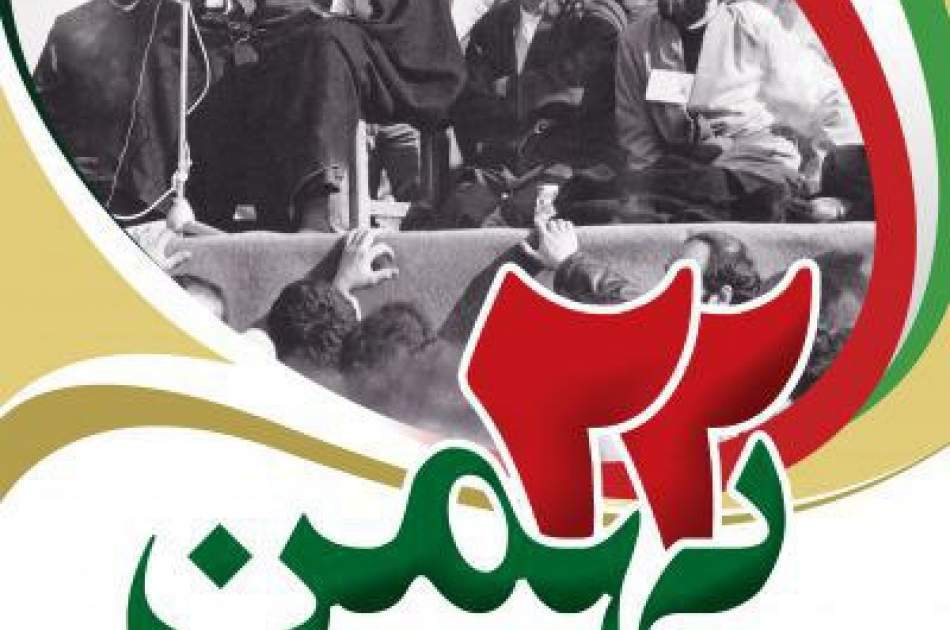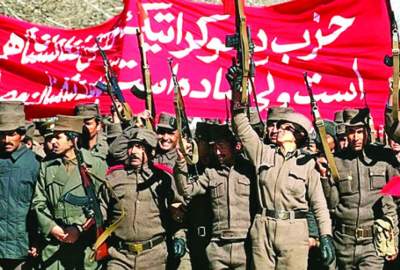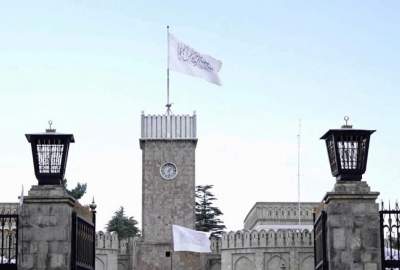Laila Aram Mehr/ The Islamic Revolution of Iran is the most important and the biggest revolution in the world, which started in the second half of the 20th century when the world was divided between two superpowers, East and West, with the slogan "Neither Eastern, nor Western" in 1356 AH, and he won in 1357 AH.
Publish dateSaturday 11 February 2023 - 11:14
Story Code : 265278
This revolution cannot be compared with all the revolutions that have taken place in various political, economic, social and cultural aspects. Because, apart from the Islamic revolution, none of the revolutions have had the characteristics and elements of a real revolution that includes all the beliefs and values of that society and the participation of all social strata.
To emphasize the exceptional nature of this revolution, we should know as much as Menachem Begin, the prime minister of the Zionist regime of Israel, says: "The victory of the Iranian revolution for Israel means a great earthquake."
Some politicians and thinkers compared Iran's Islamic revolution with the revolutions of Russia and France, and others compared it with the revolutions of China and India. If the Iranian revolution is fundamentally different from all revolutions in terms of nature.
With a simple research, you can understand the difference between Iran's Islamic Revolution and other revolutions in the world.
First, we describe the revolutions of the world:
1- The intellectual class has played a central role.
2- Regressive regimes before the revolution were in an unfavorable and weak situation politically, economically, militarily and internationally.
3- The nature of their revolution was anti-religious and they considered religion as the opium of the masses.
4- Religious scholars and priests were among the opponents of the revolution.
5- Usually the government of one class ruled over the other classes of the society, not the government of the people over the people. And also their leaders were all intellectuals.
6- After the victory, the revolutionary governments adopted "anti-religion" and strongly opposed any religious beliefs.
7- In the slogans related to the goals and ideals of all revolutions, political and economic values are mainly considered, and in some revolutions, such as the Indian revolution led by "Mahatma Gandhi" and the Algerian revolution, its anti-colonial and anti-occupation aspect has been considered.
8- After about 10 to 25 years from the passing of most of the revolutions, the goals, values and slogans of the revolution faded and a distance was created between the leaders of the revolution and the people (except for the Cuban revolution led by Fidel Castro, which still maintains its popular base). Before processing the characteristics of the revolution, it is necessary to refer to the words of the great founder of the Islamic Revolution, Imam Khomeini (RA) in his divine-political testament, who says: "There should be no doubt that the Islamic Revolution of Iran is separate from all other revolutions." Both in the quality of the struggle and in the motivation of the revolution and uprising.
Imam, the features of Iran's Islamic Revolution can be summarized and listed as follows:
1. Iran's Islamic revolution has a religious and religious origin and nature with divine motivation. While other revolutions have lacked such characteristics and even in the three revolutions that were mentioned, the foundation of the revolution was built with opposition to religion.
2. The leadership and guidance of the masses of people to attend the scenes of the revolution was the responsibility of the clergy, while in other revolutions the clergy (priests) were on the opposite front of the revolution and were with the courtiers and agents of the reactionary regimes.
3. The emergence of spirituality and spiritual awakening in Islamic and non-Islamic societies, which caused spiritual movements in the hearts of true Christians and Jews.
4. In the Iranian Islamic Revolution, all sections of the society, including workers, farmers, employees, students, students, cultural, academic, clerical, market, military, journalists and politicians, regardless of gender, were present, while in all anti-colonial revolutions, only Special classes were present.
5. The prophetic leadership of Imam Khomeini (RA), who continued his simple way of life after the victory of the Islamic Revolution.
6. The slogans and goals and values of Iran's Islamic Revolution were mainly cultural and political. And this revolution is a fusion of religion and politics, which in a sense is a cultural revolution, one of the results of which was to fill the gap between religion and science. But slogans and values of other revolutions were economic and political.
Iran's Islamic Revolution has not only caused a wave of awakening in the Islamic world for more than four decades as a religious model in the international system, but also as a political model of a resistant government against the cruel and oppressive sanctions of America and Western countries.
The same culture of resistance of the Islamic Republic of Iran system has spread in the countries of the region and neighboring countries such as: Syria, Iraq, Afghanistan, Turkey, Russia and even a small country like Venezuela, and continues on its way despite the threats and destructions and direct and indirect pressures of America and Europe.
In the hope of the victory of Islam over the world's disbelief
To emphasize the exceptional nature of this revolution, we should know as much as Menachem Begin, the prime minister of the Zionist regime of Israel, says: "The victory of the Iranian revolution for Israel means a great earthquake."
Some politicians and thinkers compared Iran's Islamic revolution with the revolutions of Russia and France, and others compared it with the revolutions of China and India. If the Iranian revolution is fundamentally different from all revolutions in terms of nature.
With a simple research, you can understand the difference between Iran's Islamic Revolution and other revolutions in the world.
First, we describe the revolutions of the world:
1- The intellectual class has played a central role.
2- Regressive regimes before the revolution were in an unfavorable and weak situation politically, economically, militarily and internationally.
3- The nature of their revolution was anti-religious and they considered religion as the opium of the masses.
4- Religious scholars and priests were among the opponents of the revolution.
5- Usually the government of one class ruled over the other classes of the society, not the government of the people over the people. And also their leaders were all intellectuals.
6- After the victory, the revolutionary governments adopted "anti-religion" and strongly opposed any religious beliefs.
7- In the slogans related to the goals and ideals of all revolutions, political and economic values are mainly considered, and in some revolutions, such as the Indian revolution led by "Mahatma Gandhi" and the Algerian revolution, its anti-colonial and anti-occupation aspect has been considered.
8- After about 10 to 25 years from the passing of most of the revolutions, the goals, values and slogans of the revolution faded and a distance was created between the leaders of the revolution and the people (except for the Cuban revolution led by Fidel Castro, which still maintains its popular base). Before processing the characteristics of the revolution, it is necessary to refer to the words of the great founder of the Islamic Revolution, Imam Khomeini (RA) in his divine-political testament, who says: "There should be no doubt that the Islamic Revolution of Iran is separate from all other revolutions." Both in the quality of the struggle and in the motivation of the revolution and uprising.
Imam, the features of Iran's Islamic Revolution can be summarized and listed as follows:
1. Iran's Islamic revolution has a religious and religious origin and nature with divine motivation. While other revolutions have lacked such characteristics and even in the three revolutions that were mentioned, the foundation of the revolution was built with opposition to religion.
2. The leadership and guidance of the masses of people to attend the scenes of the revolution was the responsibility of the clergy, while in other revolutions the clergy (priests) were on the opposite front of the revolution and were with the courtiers and agents of the reactionary regimes.
3. The emergence of spirituality and spiritual awakening in Islamic and non-Islamic societies, which caused spiritual movements in the hearts of true Christians and Jews.
4. In the Iranian Islamic Revolution, all sections of the society, including workers, farmers, employees, students, students, cultural, academic, clerical, market, military, journalists and politicians, regardless of gender, were present, while in all anti-colonial revolutions, only Special classes were present.
5. The prophetic leadership of Imam Khomeini (RA), who continued his simple way of life after the victory of the Islamic Revolution.
6. The slogans and goals and values of Iran's Islamic Revolution were mainly cultural and political. And this revolution is a fusion of religion and politics, which in a sense is a cultural revolution, one of the results of which was to fill the gap between religion and science. But slogans and values of other revolutions were economic and political.
Iran's Islamic Revolution has not only caused a wave of awakening in the Islamic world for more than four decades as a religious model in the international system, but also as a political model of a resistant government against the cruel and oppressive sanctions of America and Western countries.
The same culture of resistance of the Islamic Republic of Iran system has spread in the countries of the region and neighboring countries such as: Syria, Iraq, Afghanistan, Turkey, Russia and even a small country like Venezuela, and continues on its way despite the threats and destructions and direct and indirect pressures of America and Europe.
In the hope of the victory of Islam over the world's disbelief
avapress.com/vdcjaie8ouqem8z.92fu.html
Tags
Top hits







